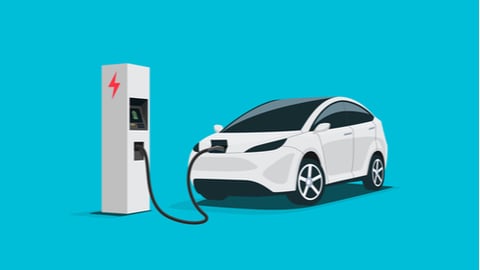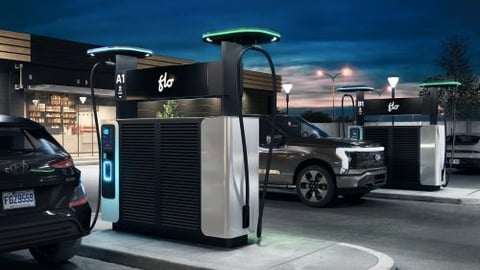ABB E-mobility helping retailers add affordable and accessible public charging infrastructure
Where to charge is a question that often happens to anyone who drives an electric vehicle in Canada.
While electric vehicles sales, and the various variants of EVs, continues to grow in Canada, a persistent problem remains the limited availability of public charging locations in Canadian cities. According to Osler, Hoskin & Harcourt LLP, “One of the leading obstacles to EV adoption is the lack of adequate public EV-charging infrastructure in Canada. As of February 2024, the government of Canada estimated there were only 30,000 public charging ports in place, against a forecasted need of 679,000 by 2040.”
Dunsky-ICCT report, prepared for Natural Resources Canada finds that going forward in the coming year there will be a greater need for more public charging locations.
“The number of zero-emission LDVs on the road is expected to grow from approximately 480,000 today to 5 million by 2030, and eventually reach 21 million in 2040,” the Dunsky-ICCT report finds. “This will require the installation of, on average, 40,000 public ports each year between 2025 and 2040, on top of the nearly 30,000 public ports currently available or planned in Canada.”
It adds that Canada will require some 679,000 public Level 2 and DC fast charging ports by 2040 and almost $300 million in grid upgrades.
Certainly, one area where electric vehicle chargers will need to be added in greater number is at Canadian retail locations. The challenge is finding the right kind of charger that will provide the needed charge to a vehicle within the time most people take to do their shopping and other everyday routines.
“There is a huge business opportunity to build EV charging that fits into people’s existing daily routines,” says Brandt Hastings president of ABB E-mobility’s North American operations. “EVs are the future, and it is bringing about one of the biggest shifts in consumer behaviour. With electric vehicles, you have an opportunity to fuel up where you are going, and for a retailer that is a new value exchange that will help them drive their core business.”
READ: Lack of public EV charging continues to worry potential EV buyers
That core business is what happens in the store, regardless of whether it is a large retail mall, a clothing store in an established retail market area or convenience store. For most Canadians, such shopping destinations are close to home, visited often and most will spend anywhere from twenty minutes to ninety minutes shopping before they return to their vehicles to either return home or drive to another destination.
Hastings says that during that time when they are in a store shopping is an ideal time to charge their vehicles. Depending on charging station availability and what kind of chargers that are available, the charging experience can be underwhelming, and sometimes frustrating.
Slow AC chargers, made for overnight charging – ones seen in many hotels and residential homes – are ill-suited for retail shopper in that shopping time window. Ultra-fast DC chargers are costly and while useful for vehicles that are low on their battery, they will slow down considerably or even stop charging when a vehicle’s battery. The issue is that the vehicle’s owner will still be charged as it sits idly at the charging station.
That is why the company’s 50 Kw C50 Compact Charger is ideal for retail environments seeking to provide a convenient and meaningful charging option to electric vehicle owners, according to Hastings. It bridges the gap between the less expensive overnight charging options and the more expensive ultra-fast DC charging options.
“A 400-kilowatt charger is just amazing at a fueling station where you come in, need to charge quickly and fast, but gives you enough time to go into the fueling station’s store to get your food and drink and whatever else you may need to purchase or do,” Hasting says. “It is not ideal for a grocery store where I may get pinged on my phone to say my battery is at 80% and I’m now going to get an idle charging fee while I have a cart full of groceries. So having that 50-kilowatt charger is ideal for the grocery store.”
As many retail environments have limited space for charging stations, the C50 is also made to be integrated into existing parking spaces, allowing them to be placed closer to a retailer’s entrance, adding an extra level of convenience for electric vehicle owners. The C50 comes with a slim 23.5 centimeters footprint and has a built-in 21.5-inch touchscreen and modernized interface like a smartphone, making it both attractive for retailers and easy for vehicle owners to use, Hastings says.




